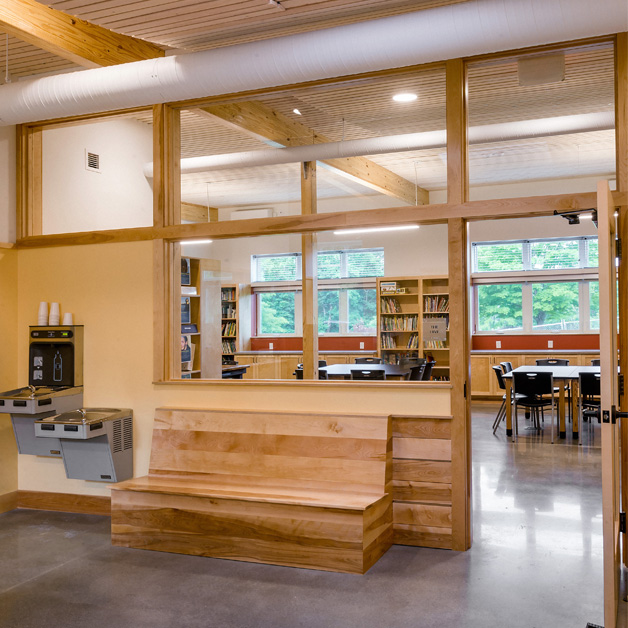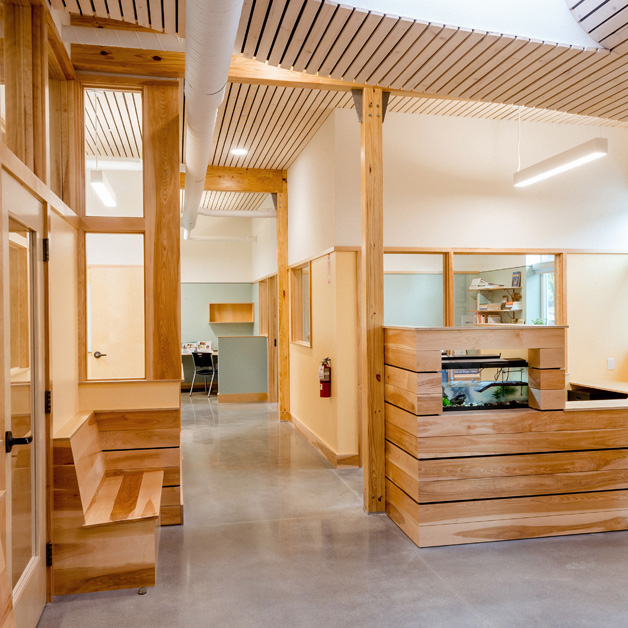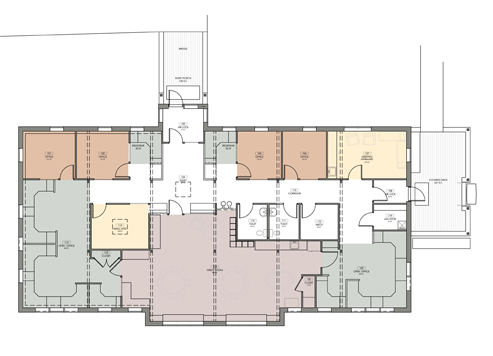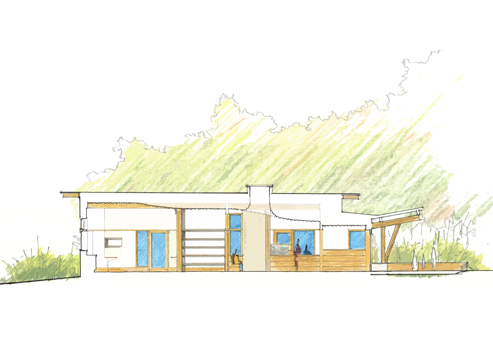The Massachusetts Audubon Society wanted to construct a new home for their programs and offices at the Drumlin Farm Wildlife Sanctuary. They needed a versatile space to accommodate a variety of activities and users throughout the year. In compliance with their newly-instituted green building standard, it needed to achieve net zero energy. In addition to meeting these standards, they also wanted the project to serve as a replicable model for future net zero building projects or renovations for their properties throughout Massachusetts.


Maclay Architects was hired to meet the net zero energy goal as well as to create a model sustainable workplace. During schematic design, Maclay engaged stakeholders in an interactive and collaborative design process which included design charrettes and stakeholder meetings.The building design incorporates biophilic elements, bird friendly design, energy conservation,efficient mechanical systems, a diversity of open and closed workstations, and a large great room for naturalist program preparation and teacher collaboration. The building entry path bridges over the adjacent rain gardens, immersing visitors in the natural landscape. An integrated landscape design connects occupants to the outdoors, offers outdoor meeting spaces, and facilitates large group gatherings. Views through the building’s extensive glazing connect occupants to the surrounding educational wildlife sanctuary. The rooftop photovoltaic system utilized the entire surface, producing a significant surplus of electricity which is utilized by several other buildings on the farm.


Completed in 2018, the building accommodates a wide variety of uses while achieving net positive energy. Mass Audubon registered the project with the International Living Futures Institute, and anticipates Net Zero Energy Certification.
Lincoln, MA
2018
3,700 sf
Net Positive Energy,
Zero Energy Certified through ILFI (anticipated)
25 kBTU/sf-yr (modeled)
0.021 cfm50/sf
24 kW (modeled) for ELC plus
20 kW for campus use